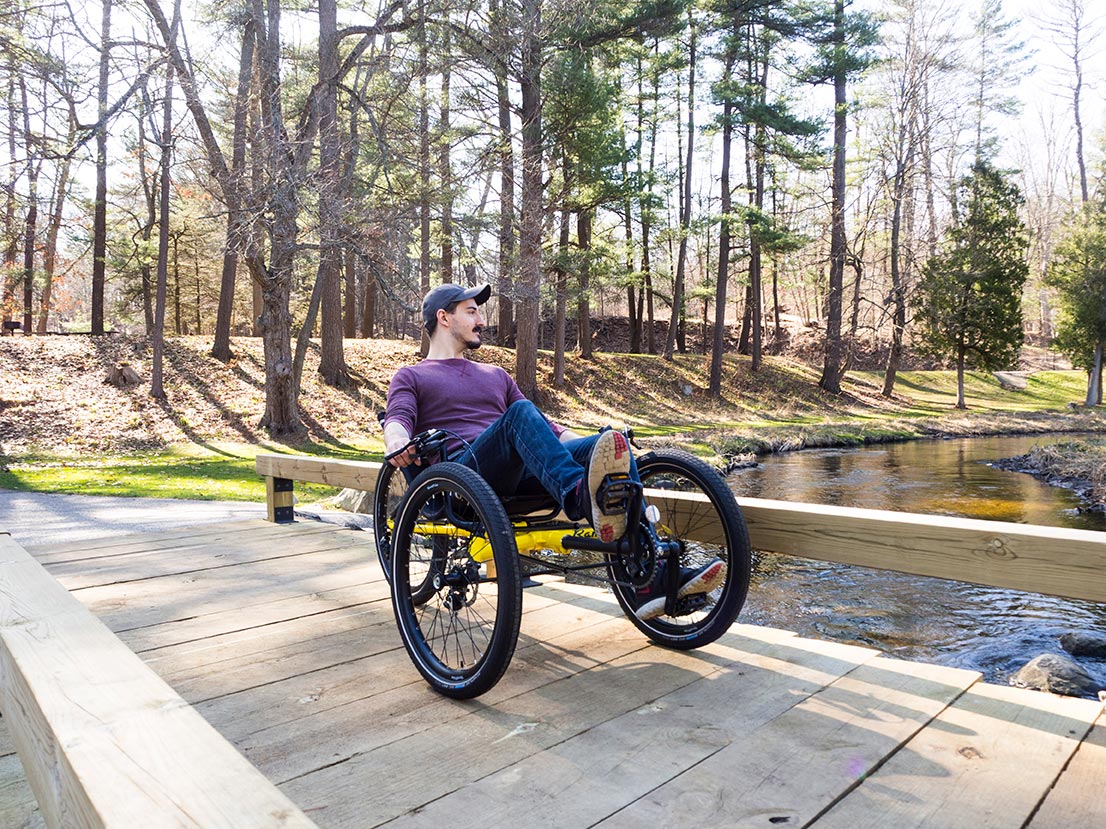
By Kyle Bryant And Originally Posted On The Huffington Post December 6, 2017
<img "="" src="https://cdn.shopify.com/s/files/1/0557/1405/4276/files/2015-12-18-1450410298-8099881-KyleBryantCatrikeBW-thumb.jpg?v=1646881152">The first few pedal strokes feel refreshing as my heart rate picks up and blood circulates through my legs.
It had been months since I got on my Catrike with any consistency, and I was out of shape.
In July I rode up the highest paved road in North America – a ride that I had been anticipating for a few years.
I rode about 1,200 miles this year to prepare for Mt Evans but since the summit I have logged no more than 200.
Now about 5 miles into my Thanksgiving ride with my Dad, I am starting to feel the effects of inactivity. As we begin to climb the first sustained hill on our 17-mile ride our speed drops significantly, my cadence slows, and my legs feel like jello.
My Dad, who rides an upright bike, passes me and says: “You’re a little sluggish today.”
“See you on the downhill,” I reply.
Don’t Blame it on the Recumbent
At times like this it’s easy to blame the lack of uphill speed on the fact that I ride a recumbent trike.
But this belief feeds into the mental divide in cycling circles—a belief that says recumbents are “second-class” bikes.
Most people have the impression that recumbent riders are out-of-shape old men. The cycling community even has a name for these riders: FOG (Fat Old Guy). But I’m not old… or fat. I’m a 34-year-old disabled athlete, who’s biked across the United States, both competitively and in the spirit of adventure.
Whether you are a FOG, a Category 1 racer, or a disabled athlete, we all have challenges.
Challenges unite every rider.
Lack of Leverage and Resistance Impact a Recumbent Rider
On a recumbent, you’re unable to stand up over your pedals to shift your weight (like an upright) and use gravity to your advantage. Instead, all your power depends upon the strength of your legs.
Also, the greatest source of resistance on any bike is in the wheels. With three wheels, I have 1.5 times the resistance.
So, as I’m crawling up the hill with my dad, the effort requires me to overcome both of these obstacles.
“Catch me if you can,” I shout.
 He does… at the next uphill.
He does… at the next uphill.
Sometimes I wish I could ride an upright bike and keep more consistent pace with my Dad, Brother, Uncle Steve, and so many cycling friends that I have made over the past 10 years.
Down the next hill I stop pedaling as I coast at 25 mph with the chilly wind in my face and the warm sun on my cheeks.
Train for the Advantages… and the Disadvantages
My trike is a tool that helps me even the playing field, sometimes, even shift the momentum in my favor, depending on my effort and preparation.
We each have our own unique set of challenges. Each person struggles to keep moving forward, whether that means getting a few more mph out of your legs or just getting out of bed.
I have come to love cycling because I am constantly in competition with myself, trying to get better all the time. If I have a poor performance by the standards I mentally set for myself, there is nobody to blame but me. I can usually trace it back to my diet, or sleep, or inactivity.
When we get back to the house, I pull into the driveway slightly in front of my Dad, and we are both exhausted and satisfied. We both pushed ourselves and kept moving for 17 miles.
Whether we are on two wheels or three, we all struggle to keep moving.
The reward lives in the effort.
(Photos by Blake Andrews, SLOtography.com)
Kyle Bryant’s book titled Shifting Into High Gear can be found wherever books are sold including Amazon.com




